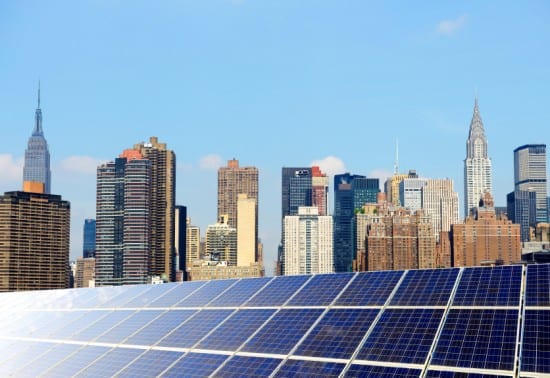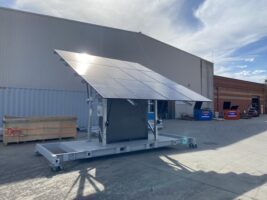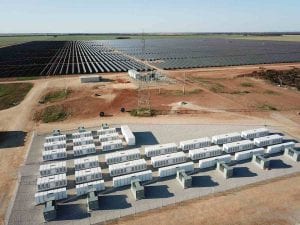
Community-scale solar is the solar electricity market’s latest darling. Utilities are excited by the opportunity for revenue and grid benefit, developers see the attraction of scale for all types of utilities and retail markets, and local communities and state regulators are jumping at the opportunity to expand community participation and enhance solar access, all at what should be a fundamentally reduced cost.
Nowhere is this more evident than in New York. Ten months after the Public Service Commission enabled virtual net metering, the early community solar market has been choked by a deepening interconnection queue as utilities struggle to keep up with developer demand for interconnection reviews.
In response, on April 18, three of the largest national developers and New York’s six investor-owned utilities—the Solar Progress Partnership—made a joint proposal to use community solar as the bridge from net energy metering (NEM) to a more comprehensive value-based pricing system for distributed generation. Community solar could fit well into New York’s electricity market reforms, making, not breaking, the rapidly growing solar market by offering a path to accelerated cost reduction.
THE ROLE OF COMMUNITY-SCALE SOLAR IN NEW YORK
The Solar Progress Partnership submitted its proposal as part of the Value of Distributed Energy Resources (DERs) proceeding, originally part of the Reforming the Energy Vision (REV) regulatory reform proceeding, in New York. DERs are a core piece of REV, and are being seen as a cost-effective alternative to traditional infrastructure investments.
The Value of DER proceeding will determine a compensation structure for community solar and other DERs, providing both a simpler short-term transitional compensation structure and a longer-term, more granular compensation structure, shaping the future of DERs in New York.
In the midst of that broader transition—in particular, over the past three months—New York interconnection queues doubled when developers submitted about 1.5 GW of community-scale solar for review. As a result, all forms of distributed generation are being prevented timely review, slowing deployment and market growth in the state. Now, both developers and utilities are leveraging the unique traits of community solar to their benefits to help resolve the bottleneck. These traits include:
- Size—large distributed generation enables economies of scale
- Location—distribution grid access can support grid needs and defer additional transmission grid build out
- Access—enhanced cost competitiveness by crediting retail and commercial customers for each kilowatt-hour of energy produced, and enhanced access for customers not eligible for rooftop solar (for financial and technical reasons)
But how do utilities and developers propose to leverage these unique community solar traits to mutual benefit?
THE JOINT PROPOSAL
At its core, the proposal allows utilities to determine a temporary framework for assessing the value of community solar projects to the grid, and to provide access to the grid on that basis. Here, access has two key determinants: physical project location and Developer Payments to the local investor-owned utility. As for location, utilities would rank order circuits as to the value or ease of community-scale solar integration, and then sift through interconnection queues to prioritize projects located on those circuits.
Project prioritization would be based on the projects’ placement in unique clusters or tranches, each with a cap on the total number of megawatts capacity permitted (see Figure 1). Projects in each tranche would be assessed a Developer Payment per each kilowatt-hour produced. These fees would increase across each successive tranche, from zero to a level to be determined, until the net credited value (net metering credit minus developer fee) equals the Locational Marginal Price and other avoided wholesale costs (LMP) plus the value of avoided distribution costs that result from placing the resources on the distribution system (D) plus the value of externalities such as the cost of carbon otherwise produced by fossil-based generation sources (E for externality). Simply put, the Partnership proposes a near-term Transitional Gap Credit corresponding to the added value of the DER, which incentivizes build out in the most beneficial locations first.
The formula LMP+D+E describes the sum of values provided by DERs to the wholesale system, distribution system, and society-at-large. Over the long term, LMP+D+E would serve to value DERs. It’s unclear at this point in the proceeding whether LMP+D+E will amount to less than, similar to, or greater than the full retail rate.

Under the terms of this proposal, New York’s Public Service Commission would ultimately determine the value of the transitional credit (used to calculate the Developer Payment) and the width of each tranche. In this construct, the transitional gap credit represents the incentive for community solar beyond the social value provided (i.e., LMP+D+E). The proposal doesn’t address what would happen if LMP+D+E were determined to be higher than the full retail rate, and whether developers would be compensated for this extra value provided.
WHAT THIS MEANS FOR COMMUNITY SOLAR IN NEW YORK
In effect, this proposal would create a small carbon market, with allotments of projects priced for their interconnection value in place of carbon emissions allotments. Similarly, if the tranches are too narrow and developer payments are set too high, a large proportion of projects would become uneconomic. If the tranches include too many projects and set payments too low, the incentives provided via the transitional gap credit could be high enough to arguably burden nonparticipating ratepayers and the grid.
Still, one core issue with critical impact on the “area under the curve” is project cost. Accelerated reductions in installed and levelized cost of solar may be achievable by banking on community solar’s unique characteristics. RMI’s Shine Community Solar Initiative, which engages buyers and sellers to co-innovate in reducing installed cost and increasing access to the underserved, estimates these reductions can amount to 40 percent of today’s all-in costs of generation.
As seen in the below chart from our recent Insight Brief, interconnection is a significant expense in the development process—one that the Partnership’s proposal evidently makes great strides to ease. To go a few steps further, communities and developers— buyers and sellers, respectively—can do more to independently and collaboratively reduce the cost of solar electricity generated for the next 20–30 years.

TOWARD RESILIENT MARKETS AND COMMUNITIES
Another unique trait of community solar is its very community orientation. Communities motivated by the benefits of community solar can perform what we call “community-supported development,” which includes community-led siting, easing local permitting, and customer acquisition. These activities open resilient local markets by addressing barriers to development and key cost centers. Further, when intended to a) provide access to all households and b) enhance local resilience by siting projects close to load, projects may more easily draw on public resources.
For instance, communities can identify primary- and secondary-use land beneficial to the grid. Aggregating similar sites can create further economies of scale, help create demand for relatively standardized systems, and enhance permitting authorities’ familiarity with specific system types for a given category of sites. Buyers can also leverage local and institutional networked relationships to spread the word about community solar. Altogether, communities can realize the value of such efforts to reduce soft costs through competitive tenders, or requests for proposals, for which RMI is supporting two communities in New York this summer.
For their part, developers have an opportunity to leverage community solar to develop sector-specific business models that provide broad access. Standardized community-scale systems, portfolio financing, efficient use of labor, and effective risk allocation between subscription activities and asset ownership can have material impact on project costs, especially when leveraged across bundles of projects. Together with circuit-level interconnection reviews (as proposed by the Partnership), these approaches can further leverage economies of scale to reduce cost.
In sum, effective program and market design can bring together buyers and sellers to more effectively participate in, and create, a low-cost community solar market. Nationwide and in New York, similar efforts to help 1) locate projects for grid benefit; 2) aggregate projects for further economies of standardized scale; and 3) increase community customer acquisition can help states, counties, cities, and neighborhoods accelerate cost reduction in community solar and continue to grow the industry, with—and without—net metering.
This article was originally published on Rocky Mountain Institute. Re-produced with permission.










